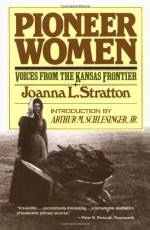
|
| Name: _________________________ | Period: ___________________ |
This test consists of 15 multiple choice questions and 5 short answer questions.
Multiple Choice Questions
1. Sarah White and _______________ were two young white women captured by Indians.
(a) Mary McKenna.
(b) Lucille Bronson.
(c) Anna Brewster Morgan.
(d) Sally Ann Madison.
2. The prairie was usually devoid of trees and ______________.
(a) Tumbleweed.
(b) Grass.
(c) Large rocks.
(d) Bushes.
3. Which of the following skills did most prairie women possess?
(a) Shearing sheep.
(b) Teaching.
(c) Scouting.
(d) Writing.
4. What was the mode of transportation chosen by families to reach Kansas?
(a) Train.
(b) Covered wagon.
(c) Boat.
(d) Stagecoach.
5. What was a major source of crop devastation on the prairie?
(a) Rabbits.
(b) Prairie dogs.
(c) Wolves.
(d) Grasshoppers.
6. What was a major occasion for social gatherings among prairie families?
(a) Cabin raisings.
(b) Christenings.
(c) Funerals.
(d) Weddings.
7. The eastern and central plains Indians were usually _______________.
(a) Aggressive.
(b) Friendly.
(c) Shy.
(d) Invasive.
8. For how long did the Kansas Drought of 1860 last?
(a) 6 months.
(b) 3 months.
(c) 18 months.
(d) 2 years.
9. Many settlers found strength in ____________ when hardships came their way.
(a) The government.
(b) Each other.
(c) Themselves.
(d) God.
10. What lured people from the east to head to Kansas to settle?
(a) Cheap land.
(b) Fertile soil.
(c) Low taxes.
(d) Abundant water.
11. Which of the following did boy children do to help their fathers?
(a) Visit the banker.
(b) Make guns.
(c) Hunt.
(d) Write letters.
12. With what did the settlers beat back fires from their houses?
(a) Wet coats.
(b) Sand.
(c) Sod.
(d) Water.
13. What was a favorite recreation for prairie families?
(a) Horse races.
(b) Concerts.
(c) Picnics.
(d) Ice cream socials.
14. What was a staple in the Kansas farm family diet?
(a) Soybeans.
(b) Corn.
(c) Sugar.
(d) Potatoes.
15. What was the weight of the average sod house?
(a) 5 tons.
(b) 2 tons.
(c) 10 tons.
(d) 90 tons.
Short Answer Questions
1. Where was a good place for a man to find a good woman?
2. Occasional skirmishes perpetuated the myth of the Native Americans as ________________.
3. What was especially valued for their ability to keep out the cold?
4. Who was the Cheyenne chief who led his warriors on a killing spree through Kansas?
5. Eventually the differences between the Native Americans and the settlers caused ________________ on both sides.
|
This section contains 337 words (approx. 2 pages at 300 words per page) |

|




